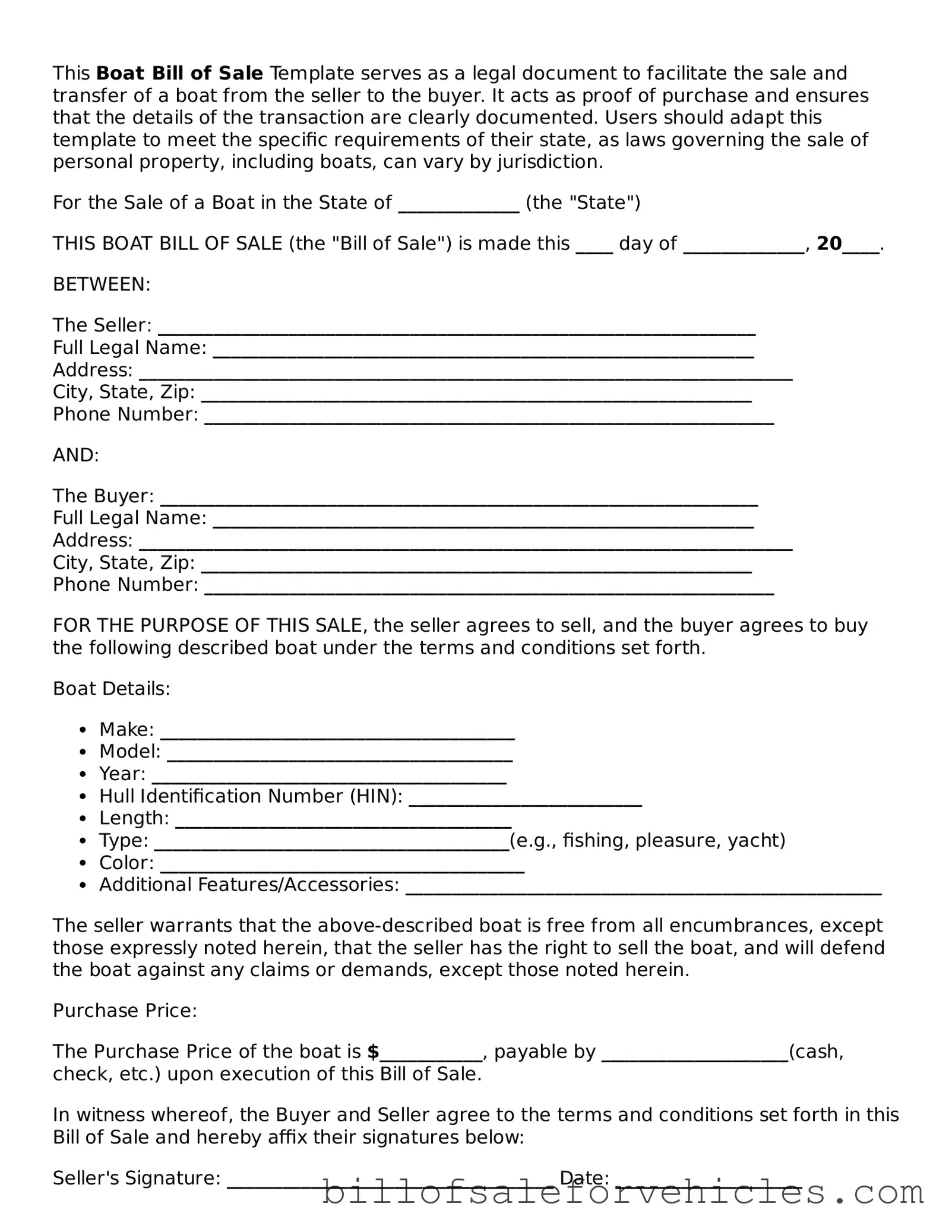This Boat Bill of Sale Template serves as a legal document to facilitate the sale and transfer of a boat from the seller to the buyer. It acts as proof of purchase and ensures that the details of the transaction are clearly documented. Users should adapt this template to meet the specific requirements of their state, as laws governing the sale of personal property, including boats, can vary by jurisdiction.
For the Sale of a Boat in the State of _____________ (the "State")
THIS BOAT BILL OF SALE (the "Bill of Sale") is made this ____ day of _____________, 20____.
BETWEEN:
The Seller: ________________________________________________________________
Full Legal Name: __________________________________________________________
Address: ______________________________________________________________________
City, State, Zip: ___________________________________________________________
Phone Number: _____________________________________________________________
AND:
The Buyer: ________________________________________________________________
Full Legal Name: __________________________________________________________
Address: ______________________________________________________________________
City, State, Zip: ___________________________________________________________
Phone Number: _____________________________________________________________
FOR THE PURPOSE OF THIS SALE, the seller agrees to sell, and the buyer agrees to buy the following described boat under the terms and conditions set forth.
Boat Details:
- Make: ______________________________________
- Model: _____________________________________
- Year: ______________________________________
- Hull Identification Number (HIN): _________________________
- Length: ____________________________________
- Type: ______________________________________(e.g., fishing, pleasure, yacht)
- Color: _______________________________________
- Additional Features/Accessories: ___________________________________________________
The seller warrants that the above-described boat is free from all encumbrances, except those expressly noted herein, that the seller has the right to sell the boat, and will defend the boat against any claims or demands, except those noted herein.
Purchase Price:
The Purchase Price of the boat is $___________, payable by ____________________(cash, check, etc.) upon execution of this Bill of Sale.
In witness whereof, the Buyer and Seller agree to the terms and conditions set forth in this Bill of Sale and hereby affix their signatures below:
Seller's Signature: ___________________________________ Date: ____________________
Buyer's Signature: ___________________________________ Date: ____________________
This document is subject to the laws of the State of _____________.
Notary Public (if applicable):
State of _________________________________
County of _______________________________
On this ____ day of _____________, 20____, before me, a notary public, personally appeared ____________________________________, known to me (or satisfactorily proven) to be the person(s) whose name(s) is/are subscribed to the within instrument and acknowledged that they executed the same for the purposes contained therein.
In witness whereof, I hereunto set my hand and official seal.
Notary's Signature: __________________________________ Seal:
